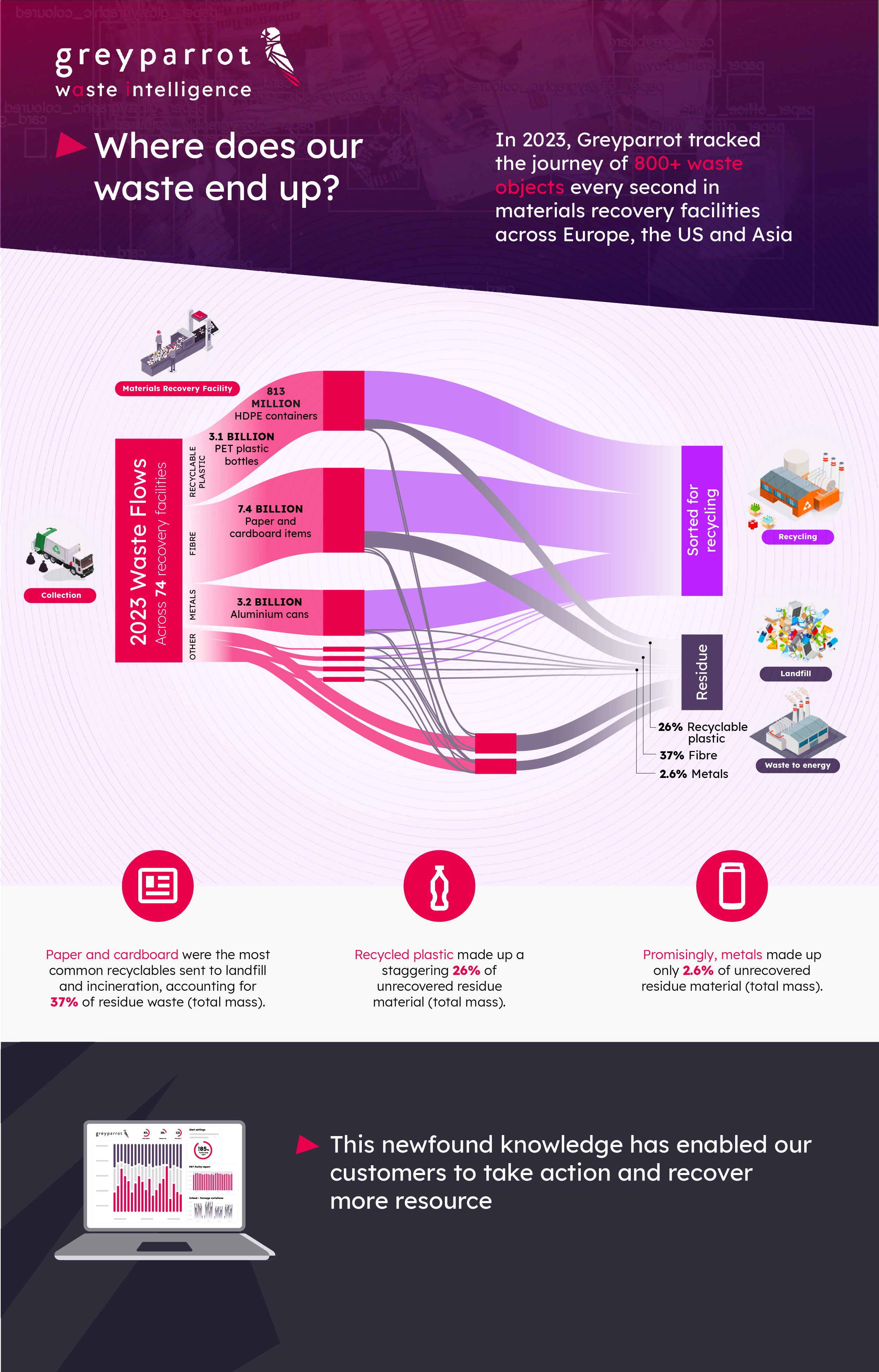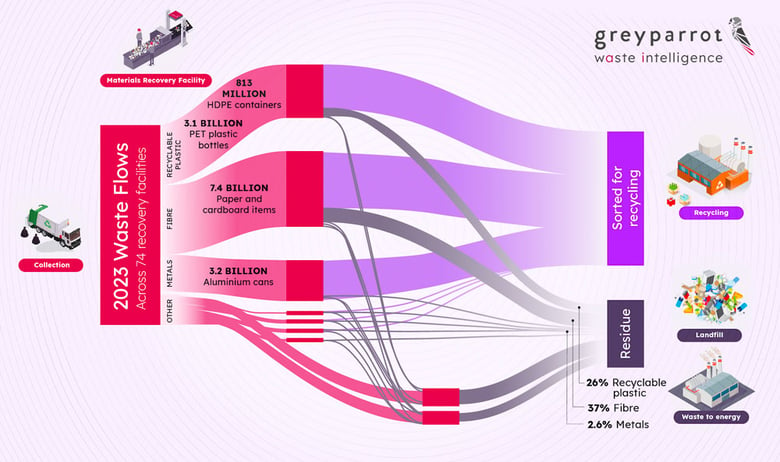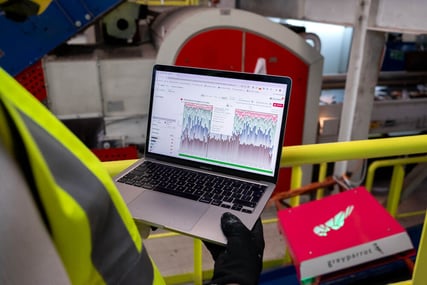The material in recovery facilities isn’t waste — until it reaches the residue line. Otherwise known as the “rejects pile”, residue material is destined for landfills and incinerators, rather than recycling and reuse.
For the global recovery facilities that have embraced waste intelligence, that material isn’t an acceptable loss — it’s an opportunity. In the effort to recover that value, our customers have used Greyparrot Analyzers to take a closer look at their residue lines, and guide everything from infeed blends to machinery adjustments and maintenance - shifting towards data-driven operational improvements and investment decisions.
Residue data unveils both plant efficiency and the post-consumption journey of materials and products
We’ve distilled residue line data from a single year, gathered in recovery facilities around the world. For the first time, here’s a glimpse at the composition of global residue lines, and the scale of the opportunity on offer:

Last year alone, we identified over 3.1 billion PET bottles, 3.3 billion aluminium cans and 7.4 billion paper and cardboard objects (just four of our 89+ recognition classes) at recovery facilities around the world. Many of those valuable, recyclable objects were on residue lines:
📄 Paper and cardboard were the most common recyclables in the residue stream, accounting for 37% of the total tonnage we analysed.
♻️ Recyclable plastic — one of the world’s most in-demand secondary resources — wasn’t far behind, making up 26% of the global residue streams we monitor.
🥫Recyclable metal, which sees relatively high global recovery rates, made up just 3% of residue streams by comparison.
As the final stage in the sorting process, tracking residue is like giving your facility a blood test. Those numbers have a direct impact on our customers’ bottom lines. As Suez UK’s Senior Technical Plant Engineer Jonathan Caesar recently put it:
“AI analytics allows for optimisation of a plant in real time, and makes it possible for us to monitor lost commodities in the residue” —
Jonathan Caesar, Senior Technical Plant Engineer at Suez UK
Translating data into resource efficiency
Armed with live insight into residue material, waste managers are able to adjust their processes, machinery and material flows, measure the impact, and divert more recyclable objects from landfills and incinerators. In 2023 alone, our customers identified and diverted thousands of tonnes of recyclable material from the residue line, recovering the value for both themselves and the wider circular economy.
To see how else waste intelligence made a tangible impact on resource recovery in 2023 — and find out how the sector will evolve in 2024 — read our year-in-review here.




.png?width=501&height=285&name=IMG_6004%20(1).png)